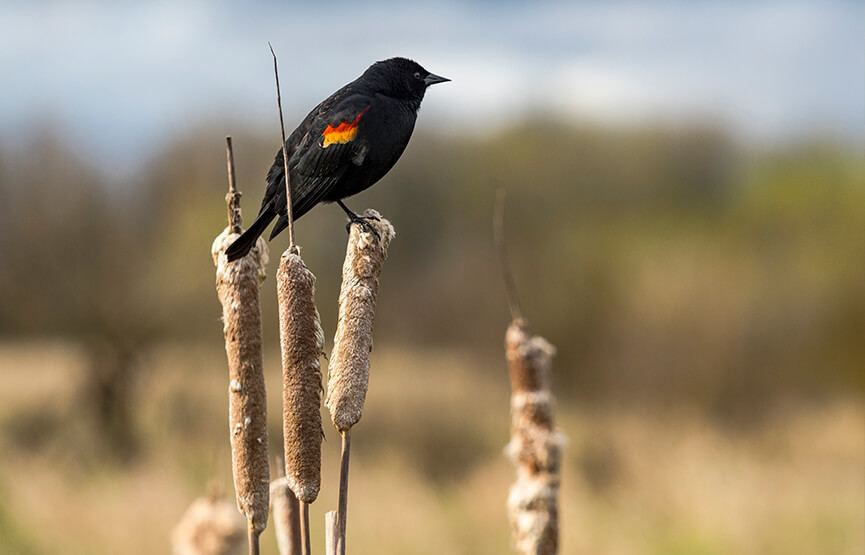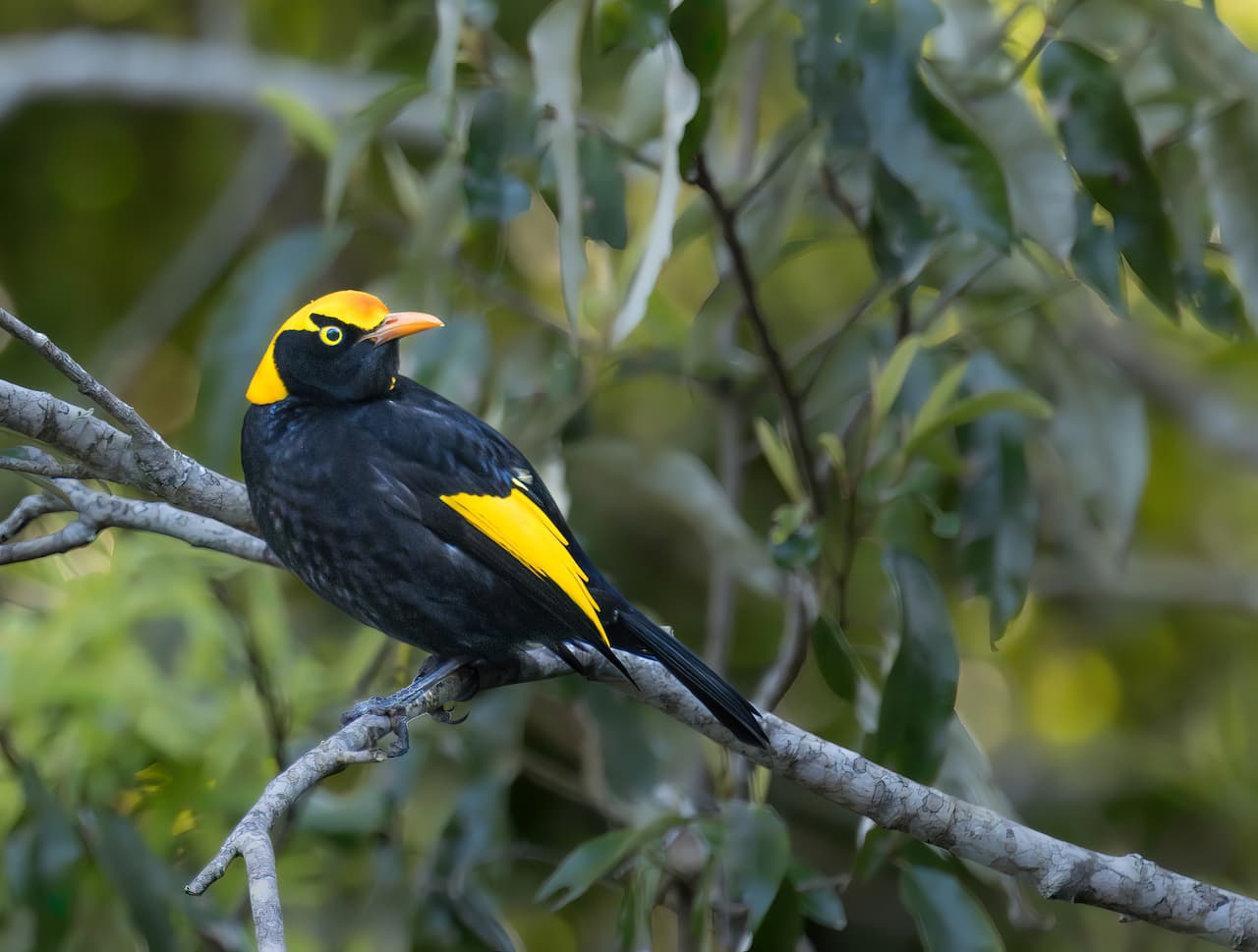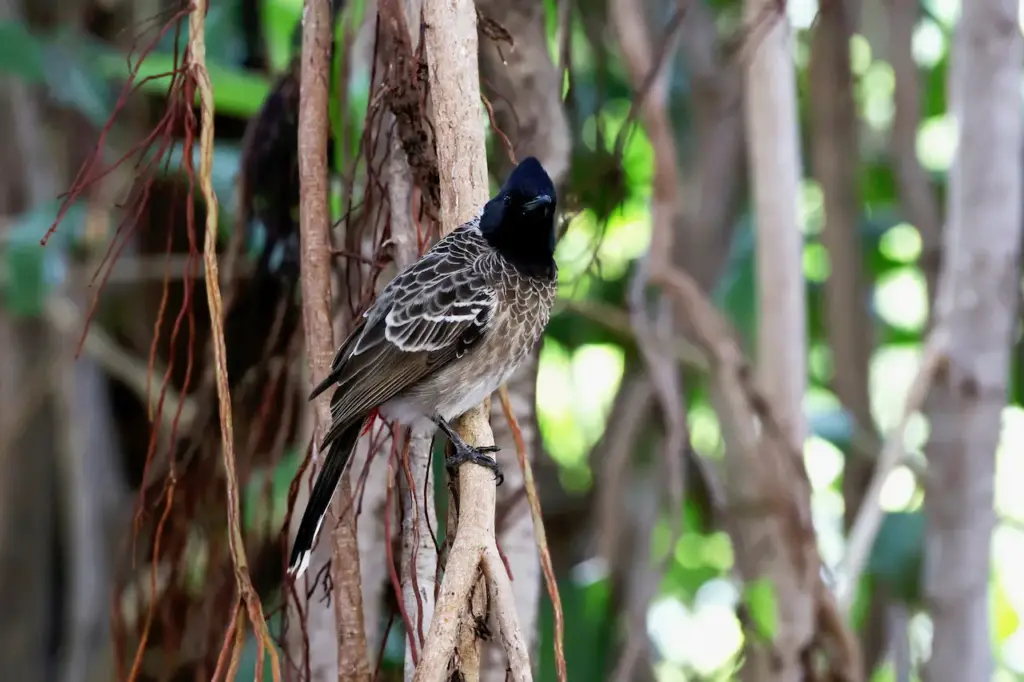
A passerine is any bird of the order Passeriformes,
which includes more than half of all bird species. A notable feature of
passerines is the arrangement of their toes (three pointing forward and
one back) which facilitates perching. Sometimes known as perching birds or, less accurately, as songbirds, the passerines form one of the most diverse terrestrial vertebrate orders, with over 5,000 identified species.[1] It has roughly twice as many species as the largest of the mammal orders, the Rodentia. It contains more than 110 families, the second-most of any order of tetrapods (after Squamata, the scaled reptiles).
The names "passerines" and "Passeriformes" are derived from Passer domesticus, the scientific name of the eponymous species (the house sparrow) and ultimately from the Latin term passer for Passer sparrows and similar small birds.
Description

The order is divided into three suborders, Tyranni (suboscines), Passeri (oscines), and the basal Acanthisitti. Oscines have the best control of their syrinx muscles among birds, producing a wide range of songs and other vocalizations (though some of them, such as the crows, do not sound musical to human beings); some such as the lyrebird are accomplished imitators. The acanthisittids or New Zealand wrens are tiny birds restricted to New Zealand,
at least in modern times; they were long placed in Passeri; their
taxonomic position is uncertain, although they seem to be a distinct and
very ancient group.
Most passerines are smaller than typical members of other avian orders. The heaviest and altogether largest passerines are the thick-billed raven and the larger races of common raven, each exceeding 1.5 kg (3.3 lb) and 70 cm (28 in). The superb lyrebird and some birds-of-paradise, due to very long tails or tail coverts, are longer overall. The smallest passerine is the short-tailed pygmy tyrant, at 6.5 cm (2.6 in) and 4.2 g (0.15 oz).
Anatomy
The foot of a passerine has three toes directed forward and one toe directed backward, called anisodactyl arrangement. This arrangement enables the passerine birds to perch upon vertical surfaces, such as trees and cliffs. The toes have no webbing or joining, but in some cotingas, the second and third toes are united at their basal third. The hind toe joins the leg at the same level as the front toes. In other orders of birds, the toe arrangement is different.The leg arrangement of passerine birds contains a special adaptation for perching. A tendon in the rear of the leg running from the underside of the toes to the muscle behind the tibiotarsus will automatically be pulled and tighten when the leg bends, causing the foot to curl and become stiff when the bird lands on a branch. This enables passerines to sleep while perching without falling off. This is especially useful for passerine birds that develop nocturnal lifestyles.[2] [3]
Most passerine birds develop 12 tail feathers, although the superb lyrebird has 16.[4] Certain species of passerines have stiff tail feathers, which help the birds balance themselves when perching upon vertical surfaces. Some passerines, specifically in the family Ploceidae, are well known for their elaborate sexual ornaments, including extremely long tails. A well-known example is the long-tailed widowbird.
Eggs and nests

The chicks of passerines are altricial:
blind, featherless, and helpless when hatched from their eggs. Hence,
the chicks require extensive parental care. Most passerines lay coloured
eggs, in contrast with nonpasserines, most of whose eggs are white
except in some ground-nesting groups such as Charadriiformes and nightjars, where camouflage is necessary, and in some parasitic cuckoos, which match the passerine host's egg.
Clutches vary considerably in size: some larger passerines of
Australia such as lyrebirds and scrub-robins lay only a single egg, most
smaller passerines in warmer climates lay between two and five, whilst
in the higher latitudes of the Northern Hemisphere, hole-nesting species
like tits can lay up to a dozen and other species around five or six.
Origin and evolution

The evolutionary history of the passerine families and the
relationships among them remained rather mysterious until the late 20th
century. In many cases, passerine families were grouped together on the
basis of morphological similarities which, it is now believed, are the
result of convergent evolution, not a close genetic relationship. For example, the "wrens"
of the Northern Hemisphere, those of Australia, and those of New
Zealand look very similar and behave in similar ways, and yet belong to
three far-flung branches of the passerine family tree; they are as
unrelated as it is possible to be while remaining Passeriformes.[5]
Much research remains to be done, but advances in molecular biology and improved paleobiogeographical
data gradually are revealing a clearer picture of passerine origins and
evolution that reconciles molecular affinities, the constraints of
morphology and the specifics of the fossil record.[6] The first passerines are now thought to have evolved in Gondwana at some time in the Paleogene, maybe around the Late Paleocene some 60–55 million years ago.[7] The initial split was between the Tyranni, the songbirds, the Eurylaimides,
and the New Zealand "wrens", which must have diverged during a short
period of time (some million years at most). The Passeriformes
apparently evolved out of a fairly close-knit clade of "near passerines" which contains such birds as the Piciformes and Coraciiformes.[8]
A little later, a great radiation of forms took place out of Australia-New Guinea: the Passeri or songbirds. A major branch of the Passeri, parvorder Passerida, emerged either as the sister group to the basal lineages and corvoids (parvorder Corvida),
or more likely as a subgroup of it, and expanded deep into Eurasia and
Africa, where a further explosive radiation of new lineages occurred.
This eventually led to three major passeridan lineages comprising about
4,000 species, which in addition to the corvoidan clade and numerous
minor lineages make up songbird diversity today. Extensive biogeographical mixing happens, with northern forms returning to the south, southern forms moving north, and so on.
Fossil record
Earliest passerines
A quite similar group, the Zygodactylidae (named for their zygodactylous approach to perching) independently arose at much the same time – and possibly from closely related ancestors – in the landmasses bordering the North Atlantic, which at that time was only some two-thirds of its present width.
Until the discovery of the Australian fossils mentioned, Palaeospiza bella from the Priabonian Florissant fossil beds (Late Eocene, around 35 mya) was the oldest known passeriform. However, it is now considered a nonpasseriform near passerine.
From the Bathans Formation at the Manuherikia River in Otago, New Zealand, MNZ S42815 (a distal right tarsometatarsus of a tui-sized bird) and several bones of at least one species of saddleback-sized bird have recently been described. These date from the Early to Middle Miocene (Awamoan to Lillburnian, 19-16 mya).[11]
Modern knowledge about the living passerines' interrelationships (see the list of families below) suggests that the last common ancestor of all living Passeriformes was a small forest bird, probably with a stubby tail[12] and an overall drab coloration, but possibly with marked sexual dimorphism. The latter trait seems to have been lost and re-evolved multiple times in songbird evolution alone, judging from its distribution among the extant lineages. Sexual dichromatism is very rare among the basal lineages of Passerida, and probably their plesiomorphic condition. But among the youngest passerid clade, the Passeroidea, extremely colorful males and drab females are common, if not the rule. On the other hand, among the basalmost Passeri a considerable number of strongly dimorphic lineages exist, too, such as the very ancient Menuridae, as well as many Meliphagoidea and Corvoidea. Sexual dimorphism is also not uncommon in the Acanthisittidae and prominent in some suboscines such as the Pipridae and Cotingidae.
Early European passerines
In Europe, perching birds are not too uncommon in the fossil record from the Oligocene onwards, but most are too fragmentary for a more definite placement:
Wieslochia was possibly not a member of any extant suborder.
That not only the Passeri expanded much beyond their region of origin is
proven by an undetermined broadbill (Eurylaimidae) from the Early Miocene (roughly 20 mya) of Wintershof, Germany, and the indeterminant Late Oligocene suboscine from France listed above. Even very basal Passeriformes might have been common in Europe until the Middle Miocene, some 12 mya.[19]
Extant Passeri superfamilies were quite distinct by that time and are
known since about 12–13 mya when modern genera were present in the
corvoidean and basal songbirds. The modern diversity of Passerida genera
is known mostly from the Late Miocene onwards and into the Pliocene (about 10–2 mya). Pleistocene and early Holocene lagerstätten (<1.8 mya) yield numerous extant species, and many yield almost nothing but extant species or their chronospecies and paleosubspecies.
American fossils

In the Americas, the fossil record is more scant before the Pleistocene, from which several still-existing suboscine families are documented. Apart from the indeterminable MACN-SC-1411 (Pinturas Early/Middle Miocene of Santa Cruz Province, Argentina),[20] an extinct lineage of perching birds has been described from the Late Miocene of California, USA: the Palaeoscinidae with the single genus Paleoscinis. "Palaeostruthus" eurius (Pliocene of Florida) probably belongs to an extant family, most likely passeroidean.

Systematics and taxonomy

Corvida and Passerida were classified as parvorders in the suborder Passeri; in accord with the usual taxonomic practice, they would probably be ranked as infraorders. As originally envisioned in the Sibley-Ahlquist taxonomy, they contained, respectively, the large superfamilies Corvoidea and Meliphagoidea, as well as minor lineages, and the superfamilies Sylvioidea, Muscicapoidea, and Passeroidea.
Major "wastebin" families such as the Old World warblers and Old World babblers have turned out to be paraphyletic and are being rearranged. Several taxa turned out to represent highly distinct species-poor lineages, so new families had to be established, some of them – like the stitchbird of New Zealand and the Eurasian bearded reedling – monotypic with only one living species.[21] In the Passeri alone, a number of minor lineages will eventually be recognized as distinct superfamilies. For example, the kinglets constitute a single genus with less than 10 species today, but seem to have been among the first perching bird lineages to diverge as the group spread across Eurasia. No particularly close relatives of them have been found among comprehensive studies of the living Passeri, though they might be fairly close to some little-studied tropical Asian groups. Treatment of the nuthatches, wrens, and their closest relatives as a distinct superfamily Certhioidea is increasingly considered justified; the same might eventually apply to the tits and their closest relatives.
This process is still continuing. Therefore, the arrangement as presented here is subject to change. However, it should take precedence over unreferenced conflicting treatments in family, genus, and species articles here.
Taxonomic list of Passeriformes families
Regarding arrangement of families
The families are sorted into a somewhat novel sequence unlike that in older works, where e.g. Corvidae are placed last. This is because so many reallocations have taken place since about 2005 that a definite taxonomy has not been established yet, although the phylogeny is by and large resolved. The present sequence is an attempt to preserve as much of the traditional sequence while giving priority to adequately addressing the phylogenetic relationships between the families.Suborder Acanthisitti
- Acanthisittidae: New Zealand "wrens"
Suborder Tyranni
Suboscine
Suborder Passeri
-
- Possible superfamily "Ptilonorhynchoidea"[verification needed]
– bowerbirds and Australian treecreepers, endemic to Australia, New
Guinea, two very dissimilar families, one smallish and inconspicuous,
the other sizeable, usually brightly colored and/or conspicuously vocal,
and with extremely unusual mating habits
- Climacteridae: Australian treecreepers
- Ptilonorhynchidae: bowerbirds
- Possible superfamily N.N. – logrunners and pseudo-babblers, insectivores, endemic to Australia, New Guinea, mid-sized and rather inconspicuous, wings short and round but tails well-developed plumage grey and brown with black and white markings, males and females look alike
- Possible superfamily "Ptilonorhynchoidea"[verification needed]
– bowerbirds and Australian treecreepers, endemic to Australia, New
Guinea, two very dissimilar families, one smallish and inconspicuous,
the other sizeable, usually brightly colored and/or conspicuously vocal,
and with extremely unusual mating habits
Infraorder Passerida
Lesser striped swallow (Cecropis abyssinica), showing some apomorphies of its ancient yet highly advanced lineage.







No comments:
Post a Comment
Note: Only a member of this blog may post a comment.